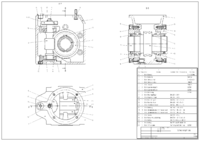
Photo from wikipedia
Abstract. Purpose: Computer-aided detection (CAD) alerts radiologists to findings potentially associated with breast cancer but is notorious for creating false-positive marks. Although a previous paper found that radiologists took more… Click to show full abstract
Abstract. Purpose: Computer-aided detection (CAD) alerts radiologists to findings potentially associated with breast cancer but is notorious for creating false-positive marks. Although a previous paper found that radiologists took more time to interpret mammograms with more CAD marks, our impression was that this was not true in actual interpretation. We hypothesized that radiologists would selectively disregard these marks when present in larger numbers. Approach: We performed a retrospective review of bilateral digital screening mammograms. We use a mixed linear regression model to assess the relationship between number of CAD marks and ln (interpretation time) after adjustment for covariates. Both readers and mammograms were treated as random sampling units. Results: Ten radiologists, with median experience after residency of 12.5 years (range 6 to 24) interpreted 1832 mammograms. After accounting for number of images, Breast Imaging Reporting and Data System category, and breast density, the number of CAD marks was positively associated with longer interpretation time, with each additional CAD mark proportionally increasing median interpretation time by 4.35% for a typical reader. Conclusions: We found no support for our hypothesis that radiologists will selectively disregard CAD marks when they are present in larger numbers.
Journal Title: Journal of Medical Imaging
Year Published: 2020
Link to full text (if available)
Share on Social Media: Sign Up to like & get
recommendations!